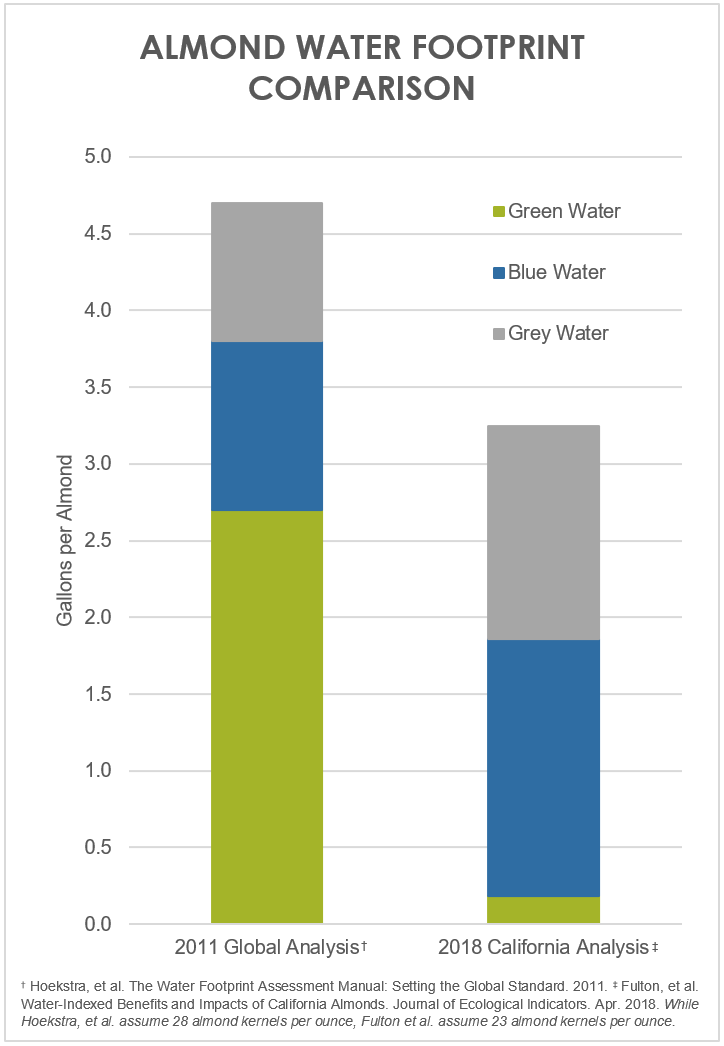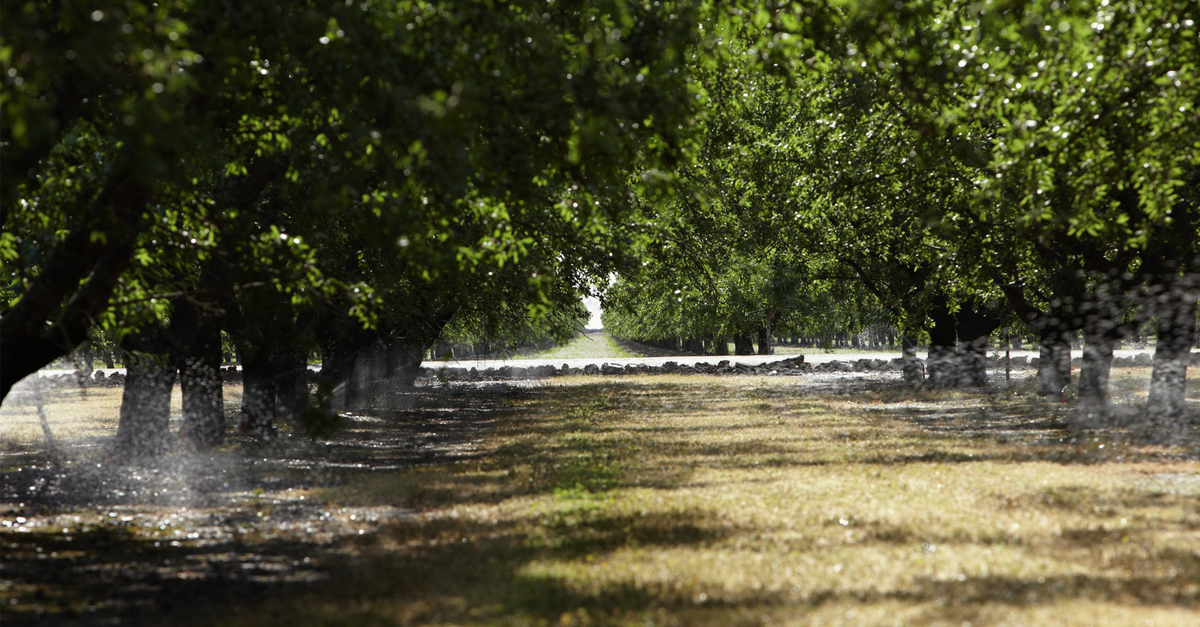New Almond Board-funded research shows the water footprint of California almonds is considerably smaller than a global average previously reported.
 The latest study, “Water-Indexed Benefits and Impacts of California Almonds,” published this April in the Journal of Ecological Indicators, used modeling methods to quantify the water footprint of almonds grown in California.
The latest study, “Water-Indexed Benefits and Impacts of California Almonds,” published this April in the Journal of Ecological Indicators, used modeling methods to quantify the water footprint of almonds grown in California.
It also analyzed the nutritional and economic benefits of California’s top 40 crops and found that almonds are among the most valuable foods for their nutritional and economic contributions.
Water footprint: methodology
Water footprints are calculated using a standard global methodology to estimate the total theoretical amount of water used to produce a product or crop — in this case, almonds.
While the water footprint calculations are useful for comparisons between different crops, they are based on theoretical models, not grower-reported data.
“The modeling is based on calculating the maximum water needed to grow almond trees,” said Gabriele Ludwig, director, Sustainability and Environmental Affairs, Almond Board of California (ABC). “But in practice, almond growers generally use about 25% less water than the models show.”1
Per the water footprint methodology, water footprints are calculated based on three components:
- Green water: Water from precipitation.
- Blue water: Water from applied or managed water sources (i.e., irrigation).
- Grey water: Water theoretically needed to dilute any pollution impacts to surface and groundwater from production processes.
Understanding the water footprint reduction
The latest research found that California almonds’ water footprint is smaller than originally reported.2 While previous reporting relied on a global average, the new research analyzed California-specific conditions and crop yields.3 This fine-tuned analysis found almonds’ total water footprint is less than previously estimated, though the components of that footprint have shifted, with a higher percentage of blue water than the global average (1.7 gallon per almond).
Growers committed to continuous improvement
Through the California Almond Sustainability Program (CASP), California’s almond growers statewide report irrigating their orchards with 36 inches of water, on average, per year. By comparison, almonds’ blue water footprint calculation is based on the statewide average annual evapotranspiration (ET) for almonds: 47 acre-inches. The real-world insights into the actual water use efficiency of today’s orchards, fueled by participation in the sustainability program, helps the industry share important practices and advancements on key topics such as water use. Growers can learn more and take part in the California Almond Sustainability Program at Almonds.com/CASP.
Almond growers have shown their ongoing commitment to responsible, efficient water use through advanced practices based on scientific research. The California almond industry began investing in research in 1982 to determine if a new irrigation method — microirrigation — could work in almond orchards. Today, nearly 80% of almond orchards use microirrigation technology, compared to the state average of 42% of farms.4
Almond growers have made great strides in irrigation efficiency and, backed by continued research from the Almond Board, will continue to be leaders in water use efficiency. One helpful tool is the Almond Irrigation Improvement Continuum, which provides a realistic path to improvements that every California almond grower may achieve. An expanded, comprehensive manual of the Irrigation Continuum will be available soon.
In addition, growers can attend irrigation workshop or schedule an in-orchard visit with Spencer Cooper, senior manager, Irrigation and Water Efficiency, ABC. Cooper’s one-on-one in-orchard consultation is free of charge and can be scheduled by contacting him at scooper@almondboard.com or (209) 604-3727.
With 14 water-focused research projects underway this year alone — an industry investment totaling $1.2 million — growers can expect a steady stream of insights to help guide their future water practices.
For more information on the water footprint research, check out this factsheet. More information on irrigation strategies and technologies is available at Almonds.com/Water and Almonds.com/Irrigation.
1 California Almond Sustainability Program. Jan. 2018.
2 Mekonnen, M., & Hoekstra, A. The Green, Blue and Grey Water Footprint of Crops and Derived Crop Products. UNESCO – IHE Institute for Water Education. 2010.
3 Fulton, et al. Water-Indexed Benefits and Impacts of California Almonds. Journal of Ecological Indicators. Apr. 2018.
4 California Almond Sustainability Program. Jan. 2014.


